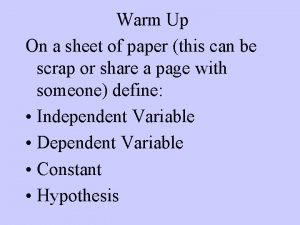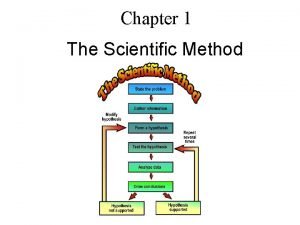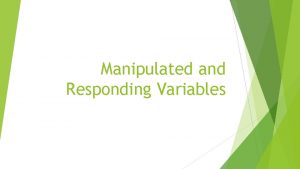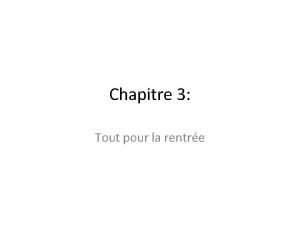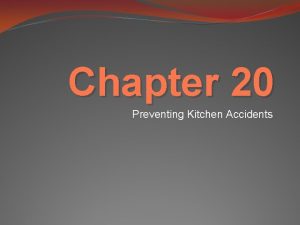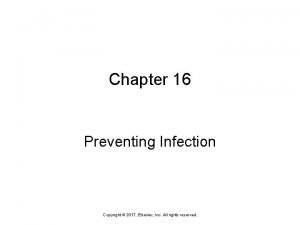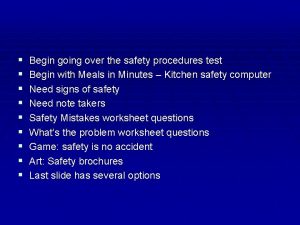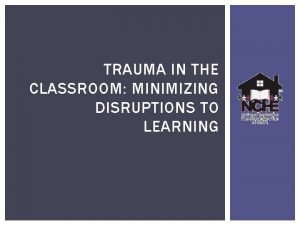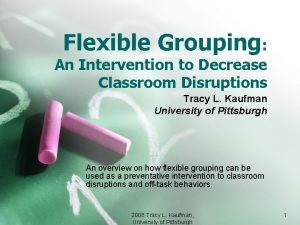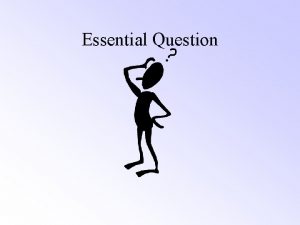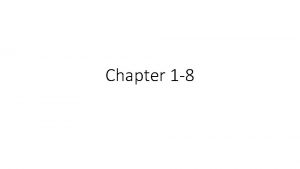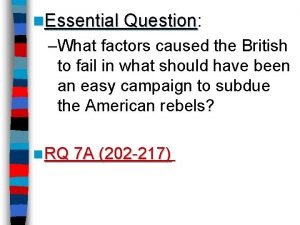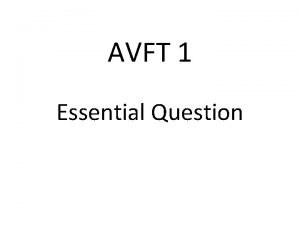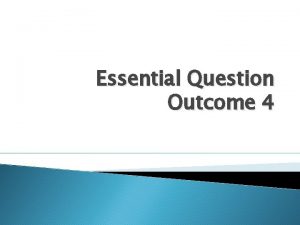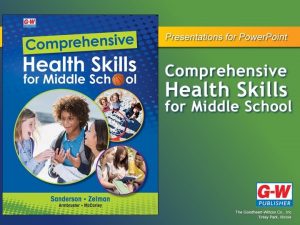Classroom Disruptions Preventing and Responding Essential Question 4

















- Slides: 17

Classroom Disruptions: Preventing and Responding

Essential Question 4

http: //www. ted. com/talks/rita_pierson_every_kid_needs_a _champion

Purpose of this session Explore individual preferences for sound and movement Understand the benefits of creating voice and movement scales Determine individual needs for all class activities Create a plan for teaching students

The greater context

Staff will identify current state in the context of their classrooms • What types of disruptions do you experience most frequently? Choose 1 -2 – Use sticky notes to collect ideas – Document on your planning form

Preventing Disruptions: After You Have Taught Your Expectations

Early Stage Interventions • • • Precorrection Proximity Gentle Verbal Reminder (not harsh) Discussion Family Contact Humor Acknowledge kids who are doing the right thing Resititution No Emotion!

Early Stage Corrections (disc 2, Ch 3, Task 3)

Mild Corrective Consequences • • • Time Owed Time. Out (In-Class) Timeout (In Another Class) Restitution Positive Practice Response Cost- Loss of Points Response Cost Lottery Detention Behavior Improvement Form Demerits

Mild Corrective Consequences Disc 2, Ch. 3, Task 4

Take a Moment to Reflect

The Consequence The Conditions The Behavior

Managing Power Struggles You must be able to be firm but free from anger; don’t personalize attacks. Stay neutral! Possible Strategies: • Separate student from audience; this can remove fuel from the fire • Table the matter until later • State both viewpoints: “You think this…I think that…” • Deliver a Closing Statement: “We’ll talk about this later. I need to finish this first” 14

Power Struggle Strategies, continued… • Take a Personal Time Out (PTO): “I need to think about this because I don’t feel comfortable talking about it now…” • Fogging Statements: Veer off onto a related but tangent topic or just say “I agree with you” • Effective Statements that avoid escalation: – “That’s an interesting opinion” – “There’s probably a lot of truth in what you say. Sometimes you may feel angry when you think I’ve been unfair” – “You might be right” 15

Take a Moment to Reflect

Resources • Mary. Perfitt. Nelson@oakland. k 12. mi. us • Dr. Pierson’s video: http: //www. ted. com/talks/rita_pierson_every_kid_needs_ a_champion • Safe and Civil Schools (Randy Sprick) http: //www. safeandcivilschools. com/ • Randy Sprick’s Interventions: https: //www. dropbox. com/s/57 vpr 1140 i 8 lt 19/Sprick%20426 -12. pdf? dl=0 • Engaged Teaching and Learning: http: //www. scoop. it/t/engagement-based-teaching-andlearning
 Costa's levels of questioning
Costa's levels of questioning Skillsforlove
Skillsforlove Characteristics of lipids
Characteristics of lipids Chapter 24 lesson 2 preventing and treating stds
Chapter 24 lesson 2 preventing and treating stds Chapter 9 resolving conflicts and preventing violence
Chapter 9 resolving conflicts and preventing violence Chapter 14:2 preventing accidents and injuries
Chapter 14:2 preventing accidents and injuries Chapter 9 resolving conflicts and preventing violence
Chapter 9 resolving conflicts and preventing violence Chapter 13:2 preventing accidents and injuries
Chapter 13:2 preventing accidents and injuries Sourima mal
Sourima mal Manipulated variable and responding variable graph
Manipulated variable and responding variable graph Manipulated variable and responding variable graph
Manipulated variable and responding variable graph Congratulate dialogue
Congratulate dialogue What is the fourth step of the scientific method
What is the fourth step of the scientific method Manipulated variable
Manipulated variable Making and responding to requests 2 bac
Making and responding to requests 2 bac Chapter 20 preventing kitchen accidents
Chapter 20 preventing kitchen accidents Chapter 16 preventing infection
Chapter 16 preventing infection Preventing kitchen accidents worksheet
Preventing kitchen accidents worksheet









